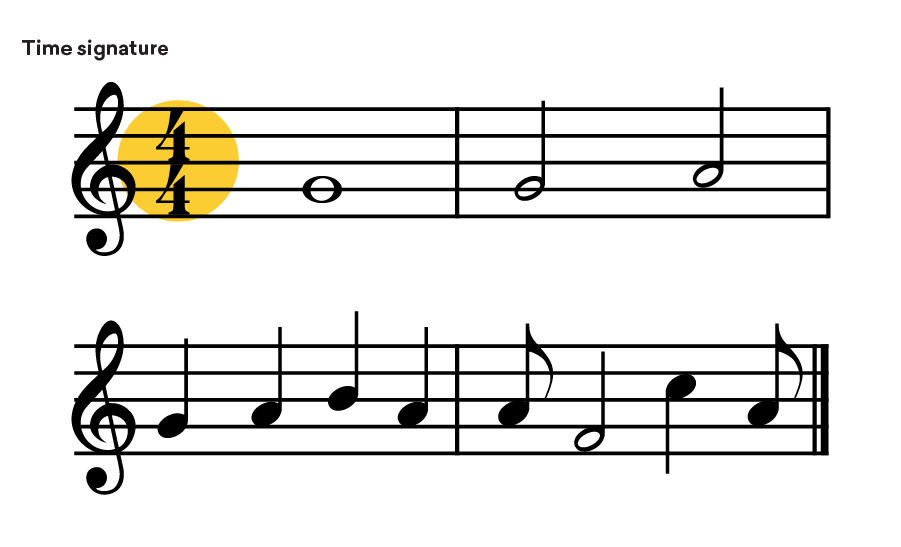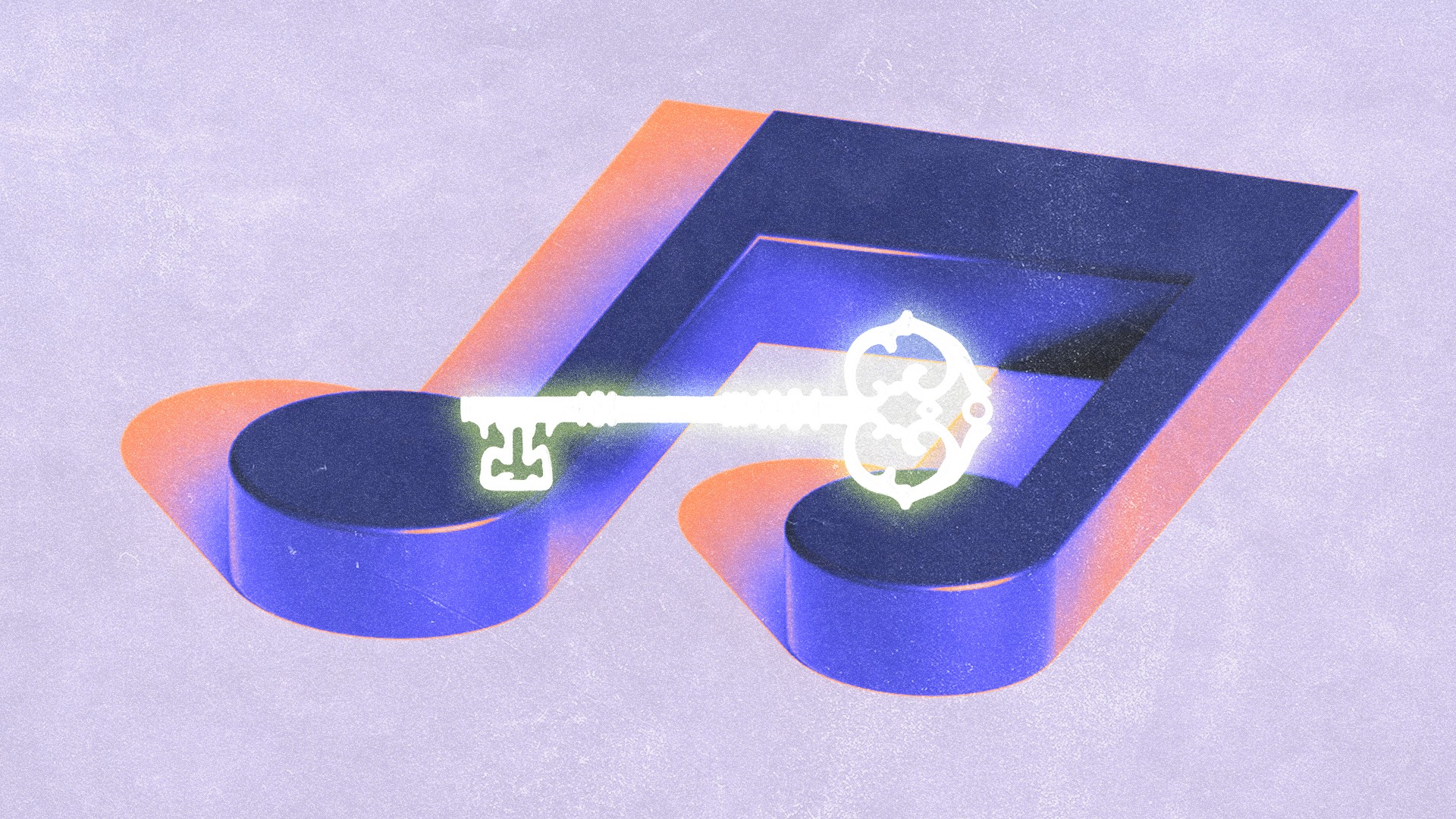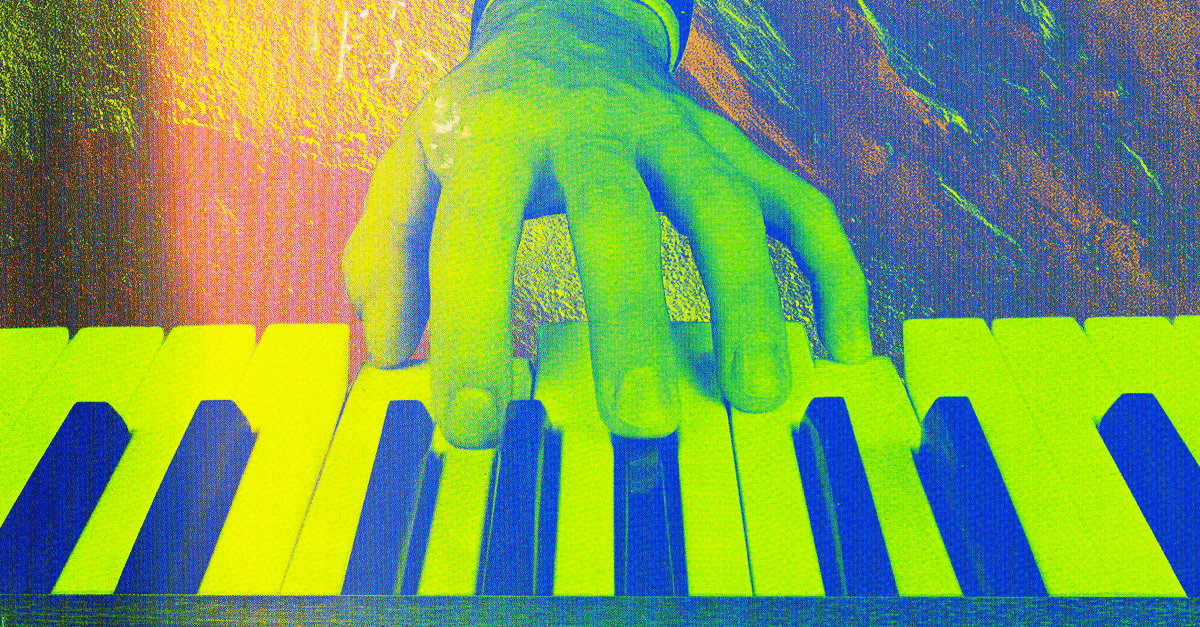How to Read Music: A Step by Step Guide to Reading Music
Learning how to read music is essential for all musicians. Reading music opens up lots of new possibilities for your creativity.
Whether you want to write down your ideas, play sheet music, or just understand what’s going on in a song, reading music is the best way to move forward.
Studying music theory to read and write music can take some practice. The basic concepts aren’t difficult once you understand how they work. Once you grasp the foundation you’ll be on your way to reading music well.
In this article I’ll go through everything you need to learn how to read sheet music.
How to read sheet music
When you first look at a piece of sheet music you’ll see lines, spaces and different types of notes and markings.
I’ll break down each element of music notation and explain how it works.
Reading music notes: The musical alphabet
The notes of the musical alphabet are A-B-C-D-E-F-G
The letter names of the musical notes identify their pitch. Each note letter has a specific place on the musical staff to let you know it’s letter name.
Let’s take a closer look at the staff.
Staff music lines and spaces
The musical staff is made up of five lines and four spaces. The position on the lines and spaces tells you the pitch and letter name of the notes on a staff.
The position on the lines and spaces tells you the pitch and letter name of the notes on a staff.
I’ll get to how to identify notes in a second, but first you’ll need to pay attention to the symbol at the beginning of the staff.
Treble clef and bass clef
The marking at the start of each line tells you the register of the instrument and how to read the notes on the staff.
Notation for bass instruments is written in bass clef and notation for other instruments is commonly written in treble clef.

There are other clefs as well (like alto clef for viola music!) but they’re used much less often, so I’ll focus on bass and treble clefs here.
How to find notes on the staff
The names of the notes on the lines and spaces follow a set order that you can remember easily with a rhyme.
The names of the notes on the lines and spaces follow a set order that you can remember easily with a rhyme.
There are two for the treble clef:
- Starting from the bottom line in the treble clef, the rhyme goes: Every Good Boy Deserves Fudge.
- Starting from the bottom space on the treble clef, the notes spell out F – A – C – E.

The pattern is the same for the bass clef, beginning on a different note:
- Starting from the first line of the bass clef, the rhyme goes: Good Boys Deserve Fudge Always
- Starting from the first space of the bass clef, the rhyme goes All Cows Eat Grass

The notes above and below the staff follow the same pattern.
Ledger lines
Ledger lines are added to notate pitches above and below the staff. These notes follow the same order and naming pattern as the notes on the staff.
Ledger lines are added to notate pitches above and below the staff.
They’re written with short lines that just cover the span of the note head itself to help you see the lines and spaces and learn to read music.
Sharps and flats: Music accidentals
The notes on the staff alone won’t give you all twelve musical notes.
If you’ve been watching closely you might have noticed that the different types of notes you’ve seen so far don’t include the black keys on the keyboard.
To learn how to read music, you’ll need to know how to write the notes in between the white keys, which involves modifying the notes on the staff with accidentals.

A sharp is written with the # symbol. It tells you to raise the note one semitone higher.
A flat is written with the ♭ symbol. It tells you to lower the note one semitone lower
The natural symbol cancels a sharp or flat and returns the note to its original state. It’s written with the ♮ symbol.

Key signatures
The key signature is essential for how to read sheet music: It’s the collection of sharps or flats at the beginning of a line that indicates the key of the song.
The key signature is the collection of sharps or flats at the beginning of a line of sheet music that indicates the key of the song.
Unless the score tells you otherwise with accidentals, maintain the sharps and flats on the lines and spaces written in the key signature throughout the song.
To fully understand key signatures you’ll have to take a look at the circle of fifths. But there’s a simple tip to read key signatures quickly to know which key you’re in.
For major keys with sharps: the last sharp in the key signature is the leading tone of the key.
The leading tone is 7th degree in the scale. Count up one semitone from the last sharp to determine the key’s root.
For major keys with flats, the second to last flat in the key signature is the key’s tonic—it’s as simple as that.

Time signature
Reading music notes isn’t all you’ll need to know to play a song. Musical passages are divided into segments called measures. Each measure contains a set number of beats.
The time signature shows you how many beats are in a measure and which note value is equal to one beat. It’s written at the start of the piece with two numbers stacked on top of each other.
The top number indicates the number of beats in a measure and the bottom number tells you the note value of a single beat.
The time signature shows you how many beats are in a measure and which note value is equal to one beat.
The most common time signature is 4/4. In 4/4 time there are four beats in a measure and the quarter note is equal to one beat. This is a good place to start when you’re learning how to read music.

Above the time signature at the beginning of the music you will often see a tempo marking with a BPM range or an Italian term that describes the feel of the tempo.
This tells you how slow or fast to play during a performance.
How to read rhythm
Each note has a rhythm value that determines its duration in a piece of music.
Rhythms are written using the shape of the note heads, stems and the beams between connected notes.
Rhythms are written using the shape of the note heads, stems and the beams between connected notes.
Each rhythm value is a fraction of the total time in a measure.
- A whole note lasts the entire bar. In common time (4/4) that means its duration is four whole beats. It’s written using a hollow note head with no stem
- A half note lasts half the bar or 2 beats. It’s written using a hollow note head with a stem attached
- A quarter note lasts for one quarter of a bar or 1 beat. It’s written with a solid note head and stem
- An eighth note lasts for half a beat. It’s written with a solid note head and stem with a flag. When several eighth notes are written together, they’re connected with a beam
- A sixteenth note lasts for one quarter of a beat. It’s written with a solid note head and stem with two flags. When multiple sixteenth notes are connected with a beam

Even further divisions are possible, but these are the main note values you’ll see as you learn to read music.
Dotted notes and triplets
There are more rhythmic possibilities than just equal subdivisions of the measure.
A dot symbol beside a note means that its duration is extended by half its original value.
A dot symbol beside a note means that its duration is extended by half its original value.
That sounds a lot more complicated than it is. Let’s look at the common example of a dotted quarter note.
In 4/4 time a quarter note is one full beat. The dot adds another half quarter note value to its total duration.
Half a quarter note = one eighth note. That means that a dotted quarter note is worth a total of 1.5 beats—simple!

Hot tip: A dotted note is normally followed by the note value that will “fill in” the missing partial division. For example, a dotted quarter note will often be followed by an eighth note.
Triplets are another special case. They’re written with a “3” symbol above the beam or bracketed above the stems.

Triplets are a type of irregular rhythm where three notes are meant to fit into the space of one. It sounds complicated on paper—but it’s easy to feel when you hear it in context.
Ties and rests
So far we’ve only talked about different types of notes and how long they last. But what you don’t play is just as important.
Rests are the music notation for intervals of silence between notes. They have their own rhythmic values to tell you how long they last.
Rests are the music notation for intervals of silence between notes.
The duration of a rest is determined by its shape. Here are the types of rests and their duration:

The last element of rhythmic notation I’ll cover are ties.
Ties are curved lines that connect notes of the same pitch together. They tell you to hold the note for the duration of both values combined.

Tips on how to read sheet music
Reading music notes can be hard, especially for beginners. Use these tips to accelerate your learning.
Think of it as a language
Reading music lines and spaces is like learning a whole new language. It’s tough at first, but if you understand letters, numbers and symbols, you can learn to read music. In fact, music, as discussed here, uses the same letters and numbers as the English alphabet—they’re just arranged differently.
When you think of it this way, you’ll see that you already have the knowledge you need to read music. You’ll simply apply it in a new way.
Start with the basics
Notes and scales are the basic elements of music notation. Study individual notes first and learn how to play some of the major scales, like C major, which is one of the easiest. Then you can move on to time signatures, beats and tempos. (Tip: Use a metronome to help you keep time.)
The last thing to learn as a beginner is the difference between whole tones and semitones. Master that, and you can move to the next level.
Find your practice groove
How long does it take to learn to read music? The answer depends on how much you already know, what you want to learn and how often you practice.
The key to reading music quickly is to have good exercises (or a good teacher), a method that matches up with your learning style and enough time to practice regularly.
You can use this guide to start learning how to read music, and refer back to it if you get stuck. It will give you a head start to start playing, making—and reading—your favourite sheet music.
Need some help? Join the LANDR community for free and get access to tips, tutorials and more to get you started.
Gear guides, tips, tutorials, inspiration and more—delivered weekly.
Keep up with the LANDR Blog.
Latest posts



